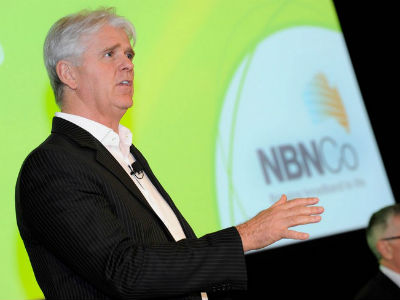Arris Scores Down Under

Arris’s international business will be getting a big lift in the years ahead after announcing Sunday night that it has won a deal to build a next-gen hybrid/fiber coax (HFC) for NBN Co., a government-owned entity, that will bring faster broadband speeds to millions of homes and businesses in Australia.
Arris CEO and chairman Bob Stanzione hinted at the news last week, announcing on the company’s fourth quarter earnings call on February 18 that the company would soon announce a “substantial deal” to provide cable infrastructure for what was then still an unnamed service provider in the Asia Pacific. In the fourth quarter of 2014, international sales reached $364 million, representing 29% of total sales.
Arris did not announce the financial terms of the NBN deal, but The Sydney Morning Herald reported that the vendor beat out Cisco Systems for a deal that’s worth about $400 million to Arris, which will provide gear and services to amp up HFC networks operated by Telstra and Singtel Optus. The paper said the HFC networks have the potential to reach 3.4 million premises.
Billed as the primary vendor and strategic partner in NBN’s HFC-facing endeavor, Arris will supply its flagship product, the E6000 Converged Edge Router, a high-density chassis that started out as a DOCSIS 3.0 cable modem termination system (CMTS) but is evolving to become a fully-fledged Converged Cable Access Platform that will also integrate edge QAM functions.
Arris will also supply other access products, including its CORWave forward path (1.2GHz) transmitters and OM4100 optical receivers and service assurance products, which provide visibility into the state of the network down to the device level. Additionally, Arris’s Global Services unit has been tapped for the full deployment and network integration for NBN’s national broadband service.
The roadmap also includes a “possible future migration to DOCSIS 3.1,” an emerging multi-gigabit architecture.
Arris installations will start in late 2015, with HFC existing predominantly in metro areas such as Sydney, Melbourne, Brisbane, Gold Coast and Perth.
Multichannel Newsletter
The smarter way to stay on top of the multichannel video marketplace. Sign up below.
Arris’s deal with NBN, a unit that is led former Clearwire CEO Bill Morrow (pictured above), comes after the Australian government agreed last year that the rollout should transition from a primarily fiber-to-the-premises model to an “optimized multi-technology mix” approach. The design of that mix is guided by the objective of providing download speeds of at least 25 Mbps to all premises, and at least 50 Mbps to 90% of fixed-line premises as soon as possible.
NBN Co outlined its multi-tech rollout plans last November, announcing that most households and businesses already served by the Optus or Telstra HFC cable networks will receive fast broadband via network upgrades, and areas where NBN FTTP networks have been deployed or are in the “advanced stages of being built” will remain part of the FTTP rollout. Additionally, NBN said it would continue to use fixed wireless or satellite broadband technologies in the rollouts, and use fiber-to-the-node and fiber-to-the-basement architectures in other communities and multiple-dwelling environments.
According to NBN, its strategic goals include connecting 8 million premises to “fast broadband” and achieve annual revenues of $4 billion by 2020, and to use less than the capped $29.5 billion government equity funding to achieve them.
As Morrow explains in this video, NBN believes there are 10 million homes and businesses that need to be connected, noting that, under NBN Co’s phased approach, hundreds of thousands of homes have already been connected. NBN is urging consumers and businesses to check online to see if services are available in their area.
For the first quarter results for fiscal 2015 (ended Sept. 30, 2014), NBN Co reported revenues of $29 million on earnings before interest and tax of -$377 million. It ended the period with 266,984 cumulative end users, with 202,718 of them served off of fiber, with the balance coming way of satellite and wireless. It ended the quarter with 639,927 premises passed, up from 310,472 in the year-earlier quarter.
“An HFC network represents the fastest and most cost-effective way to deliver it to consumers and businesses in the existing HFC network areas,” NBN Co. CTO Dennis Steiger said in a statement. “Our goal is to achieve high-speed broadband as quickly possible, with an eye on future technologies that will secure our place as a global technology leader.”
The ARRIS portfolio of Products and Services are at the heart of many Broadband networks around the world, and we look forward to expanding our presence in the Asia Pacific region.,” added Bruce McClelland, president of Network & Cloud and Global Services at Arris.
